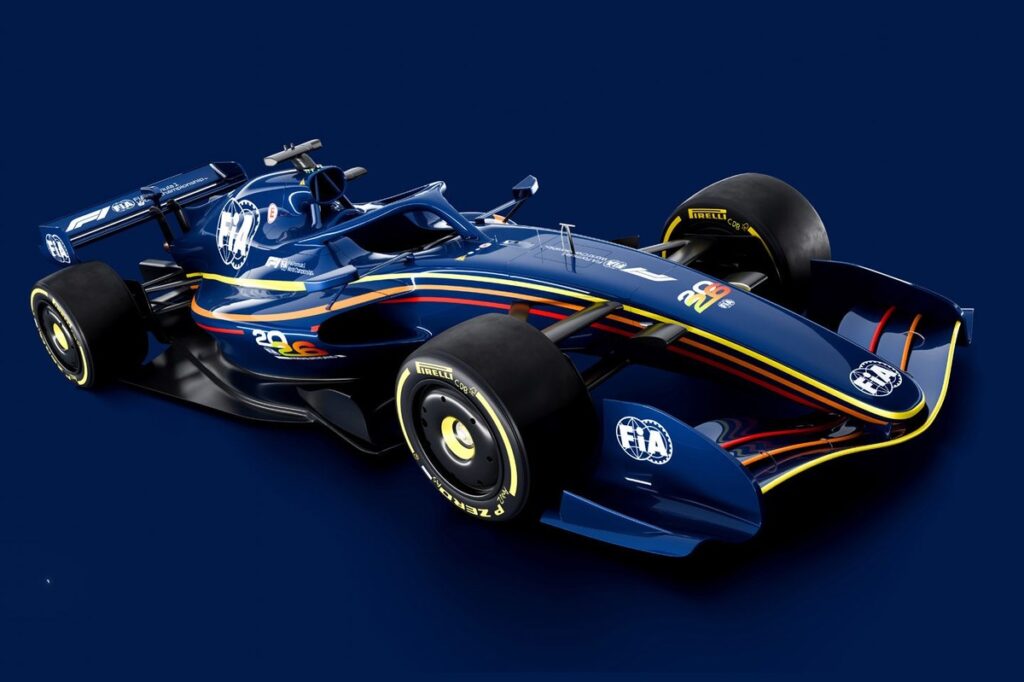The regulatory overhaul planned for 2026 is already one of the main talking points in the Formula 1 paddock.
Drivers have spoken out about a “different feeling” based on their first simulator runs, while questions have also arisen whether F1 will become more of an “energy management championship”.
A third variable that often appears, relates to the lap times of the new cars. With less downforce being generated, lap times will be achieved differently in 2026: the new cars will be faster on the straights than the current generation, but significantly slower in the corners.
First indication of the new cars: “Certainly not as slow as F2”
Overall, F1’s next generation of cars will be slightly slower, but according to the FIA, certainly not to an extent that fans will notice much. “First of all, I do get a bit surprised by how much emphasis is put on the actual lap times,” FIA’s single-seater director Nikolas Tombazis said during an interview with Autosport.
“We’ve had various phases of the sport when cars have been slower or faster, and I think once you are used to it, it’s okay. If you walk out of a simulator or in real life go from one car to another car that is one second and a half slower, you initially think ‘this is not a good car’, because you feel that second and a half. But I think once you’ve driven that a bit, then it actually doesn’t matter.”
According to Tombazis, this applies not only to drivers but also fans. “I really don’t think the lap times are going to be a factor once people get used to these cars. I think it’s a comment you make initially when you see the delta, but I don’t think it will be a factor frankly, nor will it be hugely different from now.”
2026 Formula 1 rules
Photo by: FIA
Tombazis also shared a first indication of next year’s lap times: “In our simulations the new cars will be between one and two-and-a-half seconds slower at the start of the regulations, and clearly there will be evolution that will make them gain speed.”
Having said that, there are still some question marks – also for the FIA. “In fairness, we don’t have data from all the teams, we don’t know the exact levels of downforce from all the teams. Potentially, some teams that don’t get it right initially may be a bit slower than our simulations, but we don’t expect lap times to be a talking point.”
According to the single-seater director, what matters more is close racing rather than pure lap times: “I find it a bit surprising why people actually care. Clearly if we’d make cars as slow as F2 or anything like that, then obviously people will have something to say about it, but that is definitely not the case.”
How powerful will the Manual Override Mode replacing DRS be?
In addition to lap times, another change for 2026 will be the disappearance of DRS. With the introduction of active aerodynamics (X-mode and Z-mode), every driver will have a low-drag configuration on the straights, effectively providing a form of permanent DRS. The opening of the rear wing as an “overtaking tool” will be replaced by what’s called Manual Override Mode – a boost that somewhat resembles “push-to-pass” in IndyCar.
Asked how powerful that boost will be, Tombazis explained: “This is one of the things we are doing now, when drivers are testing these cars in the simulator. It has got similarities with DRS but also differences depending on the tracks. What we are generally working on with the teams and the simulations, is to make sure that the extra boost you get keeps overtaking always on the difficult side. Difficult but feasible, rather than too easy where you just drive past somebody on the straights, or too difficult, where you don’t manage to get close enough at the braking point.
“The finetuning that is taking place at the moment is to ensure that this override boost gives you just about the right amount to be able to get to that point. It won’t be the same for each circuit, but that is exactly the work that is taking place at the moment.”
In this article
Be the first to know and subscribe for real-time news email updates on these topics
Read the full article here

